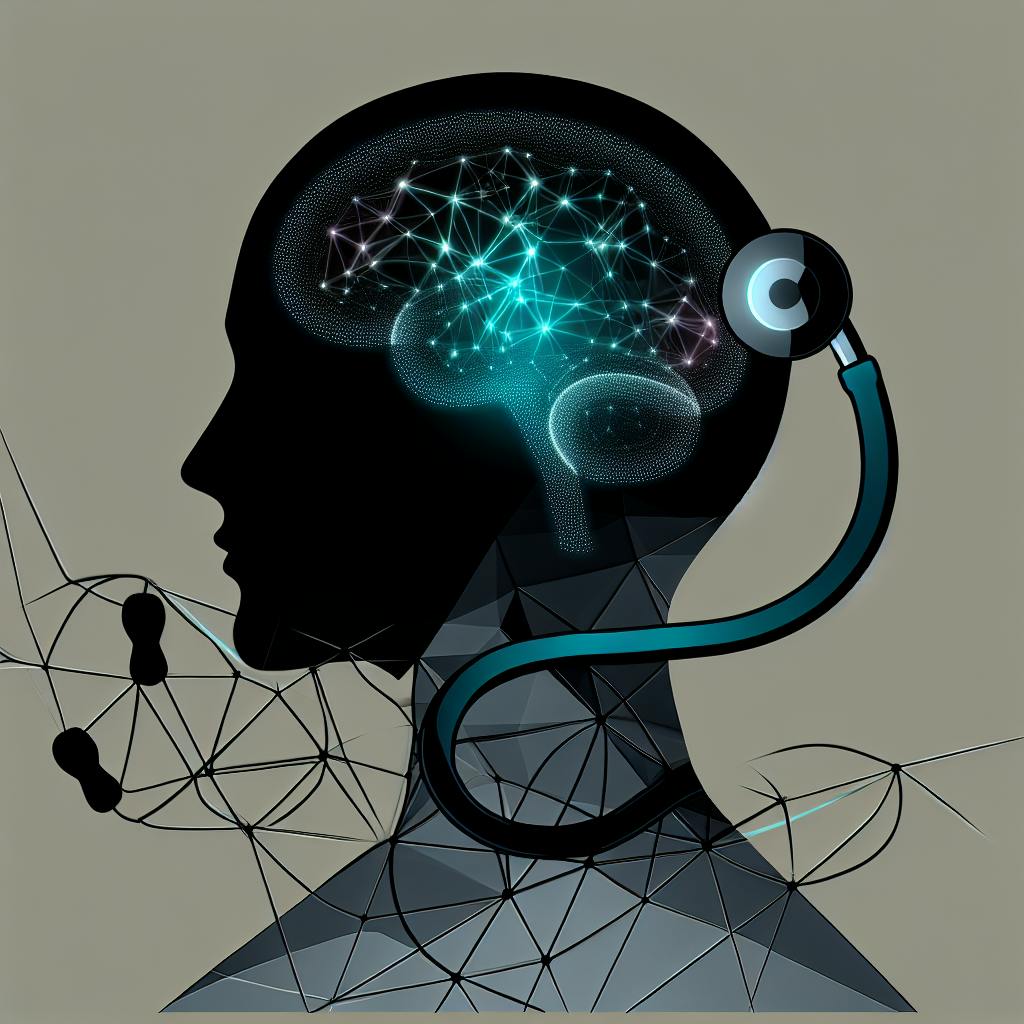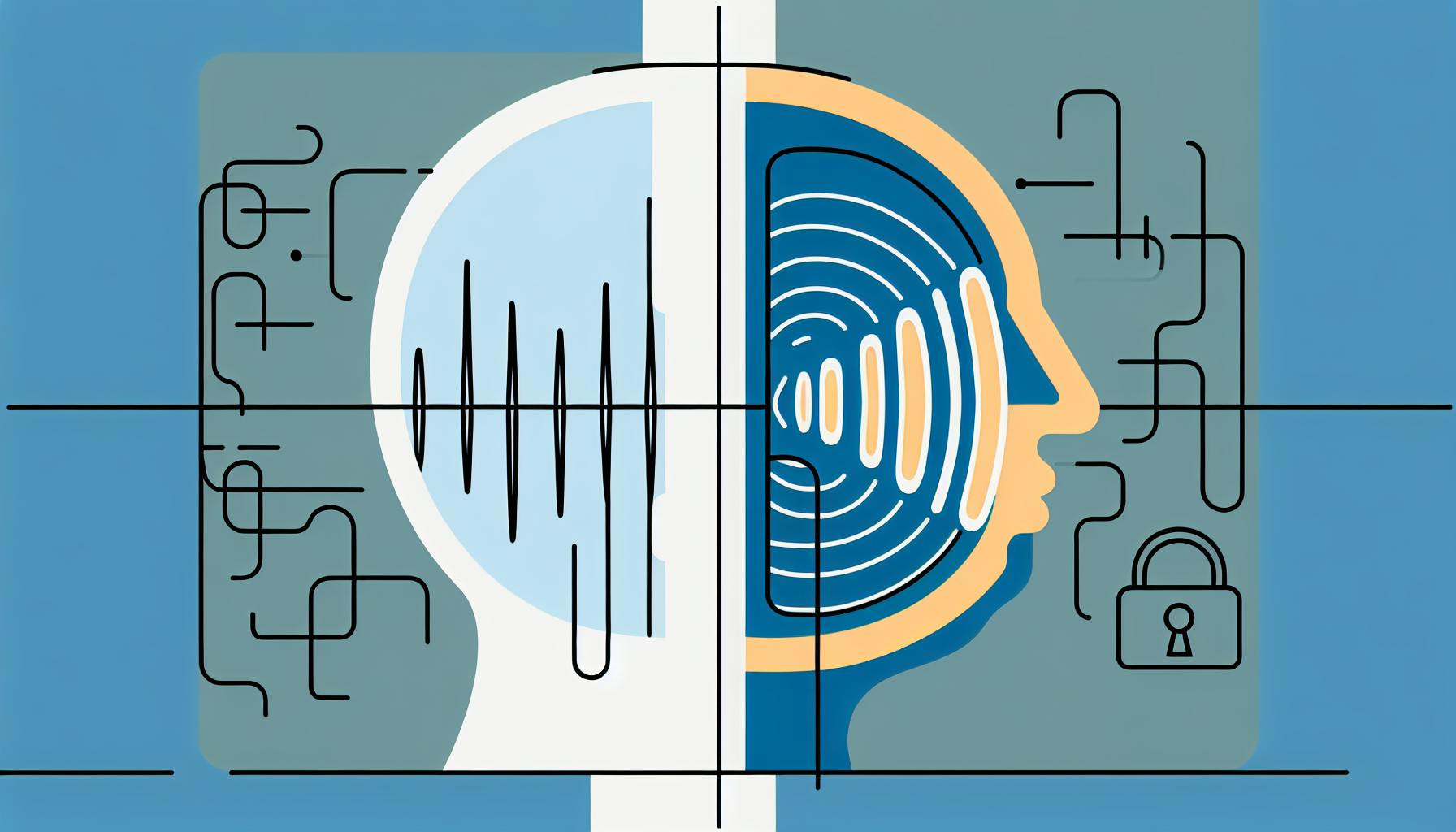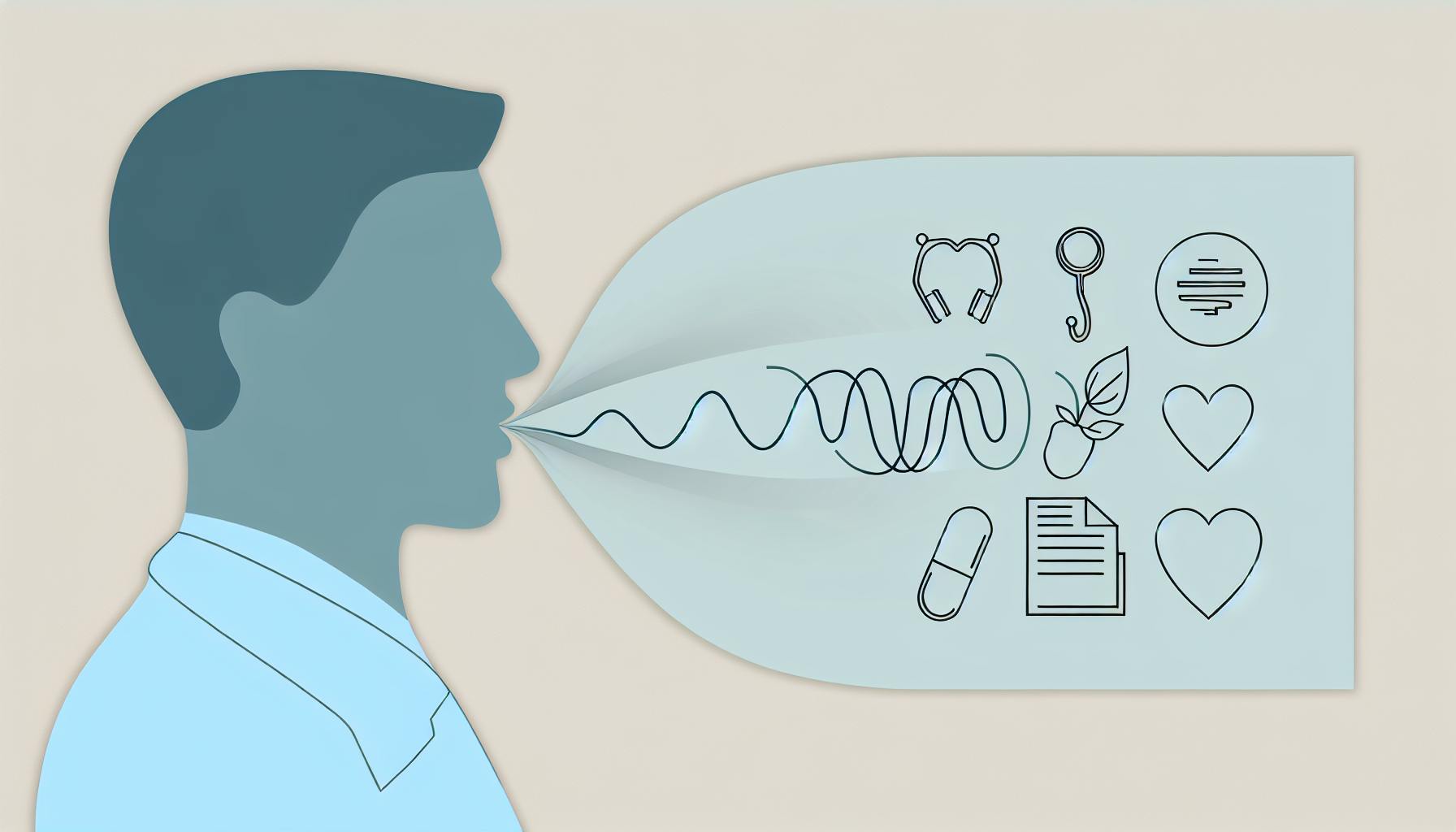Voice biometrics is changing the game in healthcare by offering a secure, efficient way to identify patients. Here's a quick snapshot of what you need to know:
- What it is: A technology that uses the sound of your voice to identify you, making it easier and safer to access medical services.
- How it works: Your voice creates a unique 'voiceprint', used to verify your identity in future interactions.
- Why it matters: It's more accurate than traditional ID methods, easy for patients, and integrates well with existing hospital systems.
- Challenges and solutions: While issues like voice changes and background noise exist, advancements in technology are addressing these effectively.
- The future: Voice biometrics is expected to become more accurate, secure, and integrated across healthcare services.
In essence, voice biometrics simplifies patient identification, making healthcare experiences smoother and more secure for everyone involved.
What is Voice Biometrics?
Voice biometrics is a fancy way of saying that a computer can recognize you just by the sound of your voice. Imagine your voice as a puzzle made up of pieces like how high or low your voice is, the speed you talk, and the way you pronounce words. Your voice has over 100 pieces that make it different from anyone else’s, even if you have an identical twin!
To make this work, the system listens to your voice and breaks it down into these pieces. Then, it creates a voiceprint, which is like a digital fingerprint but for your voice. This voiceprint is what the system uses to know it’s you when you talk to it again.
How Does Voice Biometrics Work?
Here’s how this cool tech helps make sure patients are who they say they are in hospitals:
-
Enrollment - The first time you visit, you’ll talk into the system so it can learn your voice. This is how your voiceprint is made.
-
Verification - Next time you come in, you’ll say the same phrase. The system checks if the voice it hears matches the voiceprint it saved before.
-
Authentication - If your voice and the voiceprint are a match, then the system knows it’s really you. This all happens super fast and is way safer than other ways to check who you are.
This method beats the old ways of identifying patients, like using ID cards or answering questions, because it’s quicker, more secure, and you don’t have to remember anything but to speak.
Voice Biometrics vs Traditional Patient ID Methods
| Method | Accuracy | Security | Convenience |
|---|---|---|---|
| Photo ID Cards | Moderate | Low | Moderate |
| Knowledge-Based Questions | Low | Low | Low |
| Voice Biometrics | High | High | High |
Compared to the old ways of checking who you are, voice biometrics is way ahead:
- It’s super accurate, getting it right more than 99% of the time.
- Your voiceprint is yours alone. It can’t be taken, copied, or faked like a card or password.
- All you have to do is speak, making it the easiest way to be identified.
So, voice biometrics is the best pick for a quick, safe, and easy way to make sure patients are who they say they are.
Implementing Voice Biometrics in Healthcare
The Technology Behind Voice Biometrics
Voice biometrics uses smart tech to figure out who you are by how you sound. Here's a quick look at how it works:
-
Audio capture and preprocessing: We use good mics to pick up your voice. Then, we make sure to clear out any background noise.
-
Feature extraction: The system looks for what makes your voice unique, like your tone or how fast you talk.
-
Voiceprint modeling: Using some clever computer work, we create a digital model of your voice. It's like a voice ID.
-
Verification and identification: When you speak again, the system checks if your voice matches the voice ID it saved. This helps us make sure it's really you.
With new improvements, this tech is getting even better at making sure the voice is live and not a recording.
Integration with Electronic Health Records
Making this work with health records is smooth. Here's what it can do:
- Start up by itself when a patient's file is opened, ready to listen.
- Put the check results right in your health record.
- Find your file quickly once it knows it's you by your voice.
Connecting with health records uses special tech language that lets everything talk to each other nicely.
Requirements for Implementation
To get voice biometrics working well, we need:
- Audio capture devices: Good mics and headsets to pick up voices clearly.
- Network infrastructure: Fast internet so everything works without waiting.
- Software: The computer programs that run everything and keep voices safe.
- Voiceprint database: A place to keep all the voice IDs.
- Admin portal: A control center for managing everything.
Good sound quality is important, especially in noisy places, so we might need special equipment to help with that.
Benefits and Challenges of Voice Biometrics
Advantages of Voice Biometrics
Voice biometrics makes identifying patients in hospitals simpler and safer in several ways:
-
Easier for patients - There's no need to remember passwords or carry ID cards. Just speaking is enough, which is quick and easy.
-
More secure - It's really hard for someone to copy or fake your voice. This means your identity is safer than with cards or passwords.
-
Saves money - Setting up voice biometrics is cheaper than other similar systems. It also cuts down on the time staff spend on checking who patients are.
-
Saves time - Checking who you are with your voice speeds things up. This means less waiting for you and less busywork for hospital staff.
-
Keeps your info private - Your voice doesn't give away as much personal info as fingerprints or face scans. This might make you feel better about using it.
-
Works well with hospital systems - Voice tech fits right in with the computers and systems hospitals already have, like keeping track of your health records or reminding you of appointments.
Potential Challenges and Solutions
There are a few hurdles with voice biometrics, but there are ways to deal with them:
-
Voices change - Your voice can sound different for many reasons. Having more than one recording of your voice helps fix this.
-
Loud places - Background noise can be a problem. Better mics and tech that cuts out the noise can help a lot.
-
Different accents - Having an accent might make the system less accurate. But, teaching the system with many kinds of voices can improve this.
-
Worries about privacy - Some people might not like the idea of recording their voice. Being clear about how their voice will be used and kept safe can ease these worries.
-
Initial costs - Starting up can be expensive because of the need for new equipment and software. Using cloud-based systems can help lower these costs.
By thinking ahead and planning carefully, hospitals can overcome these challenges and make identifying patients with their voice a great experience that's both secure and efficient.
Voice Biometrics Use Cases in Healthcare
Voice biometrics technology is really useful in healthcare for making sure the right patient is identified. Here are some ways it's used:
Patient Intake and Registration
- When patients come in for an appointment, they just say their name into a system that recognizes their voice. This pulls up their medical records right away.
- New patients have their voice recorded the first time they come in. This recording is then linked to their medical file.
Accessing Medical Records
- Patients can use their voice to safely look up their test results and medical records, either online or through an automated phone service.
Prescription Pickup
- At the pharmacy, patients can be asked to speak so the system can make sure the medication goes to the right person.
Medical Call Centers
- When people call to make appointments, ask health questions, or discuss billing, the call center can check it's really them by their voice.
Home Health Services
- For patients getting care at home, their voice can be used to confirm their identity, making sure they get the right kind of help.
Telehealth Consultations
- For doctor visits over the phone or computer, doctors can use voice biometrics to make sure they're talking to the right patient.
In all these situations, voice recognition helps make sure patients are who they say they are, which makes things safer and easier for everyone.
sbb-itb-527d68c
The Future of Voice Biometrics in Healthcare
Voice biometrics is getting better all the time, and it's helping hospitals make sure they know who their patients are. Here's a look at what might happen next with this technology in healthcare:
Enhanced Accuracy and Security
As technology gets smarter, voice biometrics will get even better at telling who's who, almost never making a mistake. It'll also get really good at making sure no one can pretend to be you by copying your voice. This means it'll stay a super safe way to check a patient's identity.
Integration Across More Healthcare Touchpoints
Voice biometrics is already helping with things like signing in for appointments and getting prescriptions. Soon, it could help with even more, like checking in for your appointment with just your voice, confirming your insurance, getting your medicine, using medical devices, and even keeping an eye on your health at home. It could become the main way you prove who you are in healthcare.
Cross-Organization Interoperability
Right now, each hospital or clinic might have its own system for voice biometrics. But in the future, there could be a way for all these systems to work together. This would mean you could use your voice to access your medical records anywhere, making it easier to get coordinated care from different places.
Enriched Voice Profiles and Analytics
Voice biometrics might also start to tell us more than just who someone is. It could help spot signs of health issues like mood changes or diseases like Parkinson's just from the sound of your voice. It might even help doctors understand more about your health and how you're responding to treatment. This could make healthcare more about preventing problems and tailoring care to each person.
In short, using your voice to check who you are in healthcare is likely to become more common. And as this technology gets even better, it could also help doctors take better care of you by catching health issues early and making your care more personal.
Frequently Asked Questions
Accuracy and Reliability
Is voice biometrics good at telling who's who?
Yes, voice biometrics is really good at figuring out who's speaking, with a success rate of over 99%. It's just as reliable as fingerprint checks. But, the place's noise level can affect how well it works.
What happens if I have a cold or my voice changes? Can it still recognize me?
Usually, small changes in your voice, like from a cold, won't mess things up. Hospitals can keep a few different voice recordings to help the system recognize you even if your voice changes a bit. The system looks at many parts of your voice, so it's still pretty reliable.
Can it tell if someone is faking my voice or using a recording?
Yes, the latest systems are smart enough to spot fake or recorded voices. They might even ask you to say something unexpected to catch out imposters.
Security
How do they keep my voice safe?
Your voice is turned into a secure code and kept safe using strong protection methods. Only certain hospital staff can get to it, and it's never shared without your OK. They take lots of steps to make sure no one misuses it.
If someone gets into the voice data, can they steal my identity?
If there's a data breach, it's always a worry. But your voice data alone isn't enough for someone to pretend to be you and get medical services. Hospitals work hard to protect all patient information from hackers and misuse.
Costs
How much does it cost to start using voice biometrics?
The cost depends on how big the hospital is and how many people will use it. But it's designed to be affordable, and you can pay based on how much you use it. Moving things to the cloud can also help save money upfront. Over time, it can save a lot of money by making things more efficient and reducing fraud.
When do hospitals start seeing the benefits of spending on voice biometrics?
Most hospitals start seeing the good stuff—like saving time and money—within a year. Over three years, the savings can be much more than the initial costs, thanks to less fraud and smoother operations.
Implementation Challenges
What if some hospital staff aren't keen on using voice biometrics?
It's important to talk about how it makes things better for both patients and staff—like being safer and saving time. Showing real examples of how it's helping can convince people. Training can also help staff feel more comfortable with the new system.
Will it be hard to make voice biometrics work with our current systems?
Before choosing a system, check that it'll work with what you already have. Cloud-based options usually make this easier. If you pick an on-premise system, make sure you understand how to connect everything. Good support from the vendor is crucial.
How can the system understand everyone, even with accents or speech issues?
The system can learn to understand different ways of speaking if you feed it a variety of voice samples. This helps it get better at recognizing everyone's voice, no matter their accent or if they speak differently. Keeping track of how well it's doing and making adjustments helps too.
Conclusion
Voice biometrics is a smart way for hospitals to make sure they're dealing with the right patient. It uses the unique way each person sounds to identify them, making the whole process of getting medical care smoother and safer.
Here's what you need to know about voice biometrics in healthcare:
-
This technology is really good at telling people apart, with more than 99% accuracy. It's much better than using ID cards or answering questions.
-
It's easy for patients. When you first visit, the system learns how you sound. Later, it uses this to quickly check it's you, without any hassle.
-
Hospitals can easily add voice biometrics to the computer systems they already have, like the ones that keep your medical records. This helps things run more smoothly.
-
Hospitals take steps to keep your voice information safe. They store it securely and make sure only the right people can access it.
-
As technology gets better, voice biometrics might also help doctors learn more about your health from the sound of your voice. Plus, it could work across different hospitals, making your medical care more connected.
By tackling challenges like noise and making sure the system understands everyone, voice biometrics can save time and money. As it gets even better, it could become a common way to check who you are in healthcare.
For hospitals looking to improve how they check patients' identities, voice biometrics is worth thinking about. It's a simple, quick, and secure way to make sure patients get the care they need, and it could lead to better health care for everyone in the future.
Related Questions
Can voice recognition be used for biometric identification?
Yes, voice recognition can indeed be used to identify people. When you talk, your voice has special features that are just yours. Voice recognition systems use these features to make a "voiceprint" that can tell who you are. This voiceprint helps confirm your identity when you need to get into secure places.
What are the problems with voice biometrics?
Voice biometrics is pretty cool, but it does have some issues, like:
-
Spoofing: This is when someone tries to trick the system by copying your voice. There are special tools to stop this.
-
Changing Voice: Your voice can change because of things like getting older or getting sick. The system needs to keep up with these changes by updating your voiceprint now and then.
-
Noisy Environments: If there's a lot of noise around, it might be hard for the system to hear you properly. But don't worry, there are ways to filter out the noise.
-
Acceptability: Some people might not like the idea of their voice being recorded and kept. It's important to make sure everyone knows how their voice will be used and kept safe.
What are the risks of voice recognition?
Using voice recognition comes with some risks, such as:
-
Someone might steal your voiceprint and pretend to be you to get into places they shouldn't. That's why keeping voice data safe is super important.
-
There's a chance that someone could play a recording of your voice to break into your accounts. Systems that can tell if the voice is live or not help prevent this.
-
If your voice changes and the system doesn't recognize you, you might have trouble using it. Keeping your voiceprint up to date can help.
-
People worry about their voice being recorded without them saying it's okay. Having clear rules about voice data is a must.
Can voice recognition identify a person?
Yes, voice recognition can tell who you are by using the unique parts of your voice. It's like having a key that only works for you. This makes voice recognition a good choice for making sure you are who you say you are.


